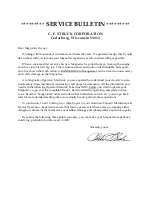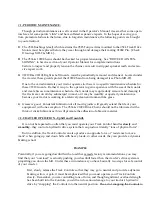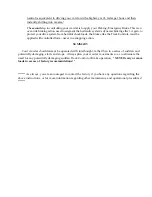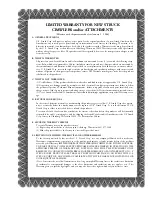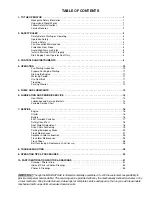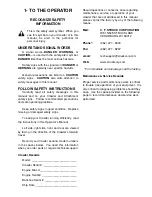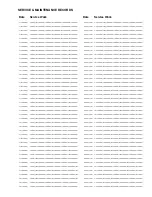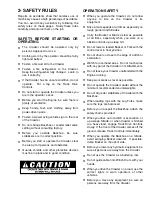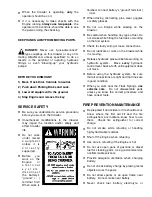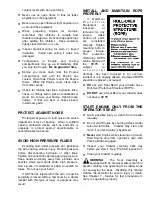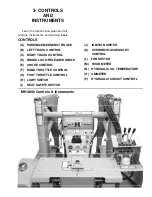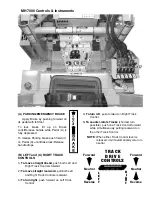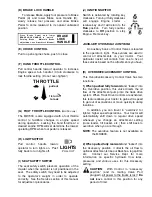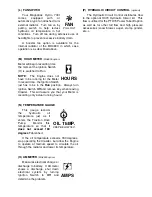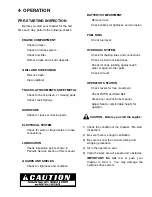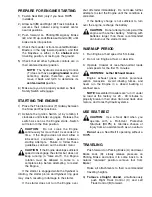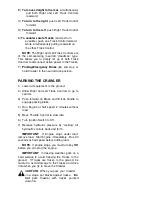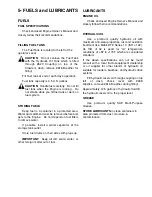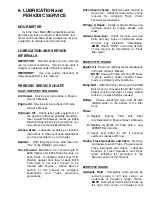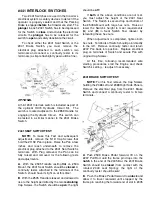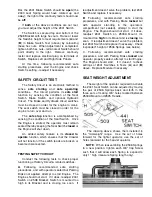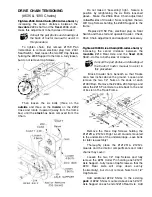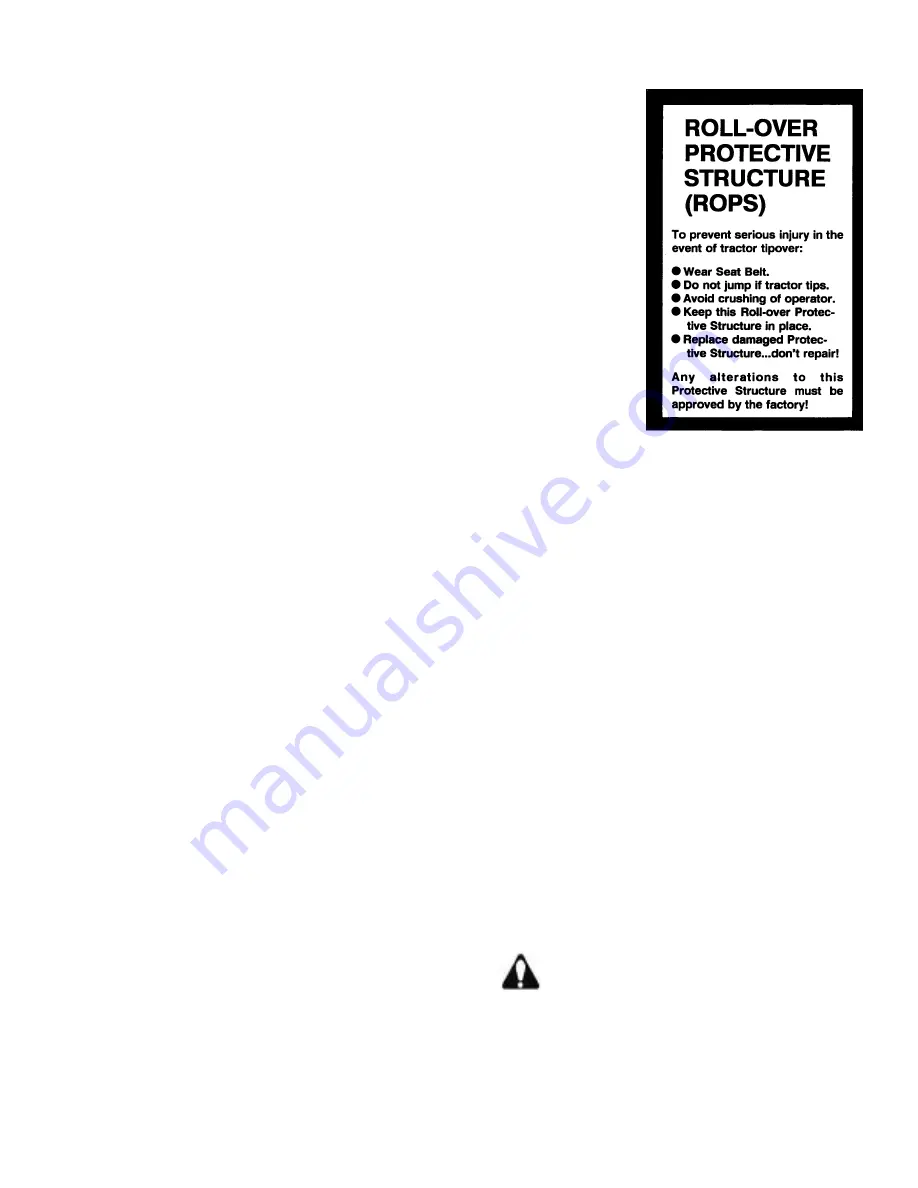
coolant levels with an open flame.
•
Never use an open flame to look for leaks
anywhere on the equipment.
•
Never use an open flame as light anywhere on
or around the equipment.
•
When
preparing
Engine
for
storage,
remember that inhibitor is volatile and
therefore dangerous. Seal and tape openings
after adding the inhibitor. Keep container
tightly closed when not in use.
•
Inspect electrical wiring for worn or frayed
insulation. Install new wiring if wires are
damaged.
•
Temperature
in
Engine
and
cooling
compartments may go up immediately after
you stop the Engine.
Be on guard for fires.
•
Before you clean trash from the Engine
compartment, wait until the Engine has
cooled. Open Side Panels to cool the Engine
faster. While the Engine cools, clean trash
from other areas.
•
Check for leaking fuel lines, hydraulic lines,
hoses, or fittings with a piece of cardboard or
wood. Do not use your hands. Tighten loose
fittings. If lines are bent or hoses kinked,
install new parts.
PROTECT AGAINST NOISE
Prolonged exposure to loud noise can cause
impairment or loss of hearing. Wear a suitable
hearing protective device such as earmuffs or
earplugs to protect against objectionable or
uncomfortable loud noise.
AVOID HIGH-PRESSURE FLUIDS
Escaping fluid under pressure can penetrate
the skin causing serious injury. Relieve pressure
before disconnecting hydraulic or other lines.
Tighten all connections before applying pressure.
Keep hands and body away from pinholes and
nozzles which eject fluids under high pressure.
Use a piece of cardboard or paper to search for
leaks. Do not use your hand.
If ANY fluid is injected into the skin, it must be
surgically removed within a few hours by a doctor
familiar with this type of injury or gangrene may
result.
I N S TA L L AND MAINTAIN ROPS
PROPERLY
If
Roll-Over
P r o t e c t i v e
Equipment
is
loosened
or
removed for any
reason,
make
certain all parts
are
reinstalled
correctly. Tighten
mounting bolts to
proper
torque.
The
protection
offered by ROPS
will be impaired if
the
ROPS
is
subject
to
s t r u c t u r a l
damage, has been involved in an overturn
incident or is in anyway altered. Damaged ROPS
should be replaced, not reused.
•
DO
use your Seat Belt if your Crawler has a
Roll-Over Protective Structure (ROPS).
•
DO NOT
use a Seat Belt if your Crawler does
not have a ROPS.
START ENGINE ONLY FROM THE
OPERATOR’S SEAT!
•
Avoid possible injury or death from Crawler
runaway.
•
Do not start Engine by shorting across starter
solenoid terminals. Crawler may start and
move if normal circuitry is bypassed.
•
Never
start Engine while standing on ground.
Start Engine only from operator’s seat, with
Parking Brake engaged.
•
Inspect your Crawler carefully each day
before you start it. See “Pre-Start Inspection”.
•
Clean your Crawler regularly.
WA R N I N G
: The Seat Assembly is
equipped with an electrical safety switch to
prevent starting and operating the crawler while
not occupying the seat. Disabling this feature
creates the potential for severe injury or death.
See Chapter 7 - Service for test procedures to
verify it is operating properly.


